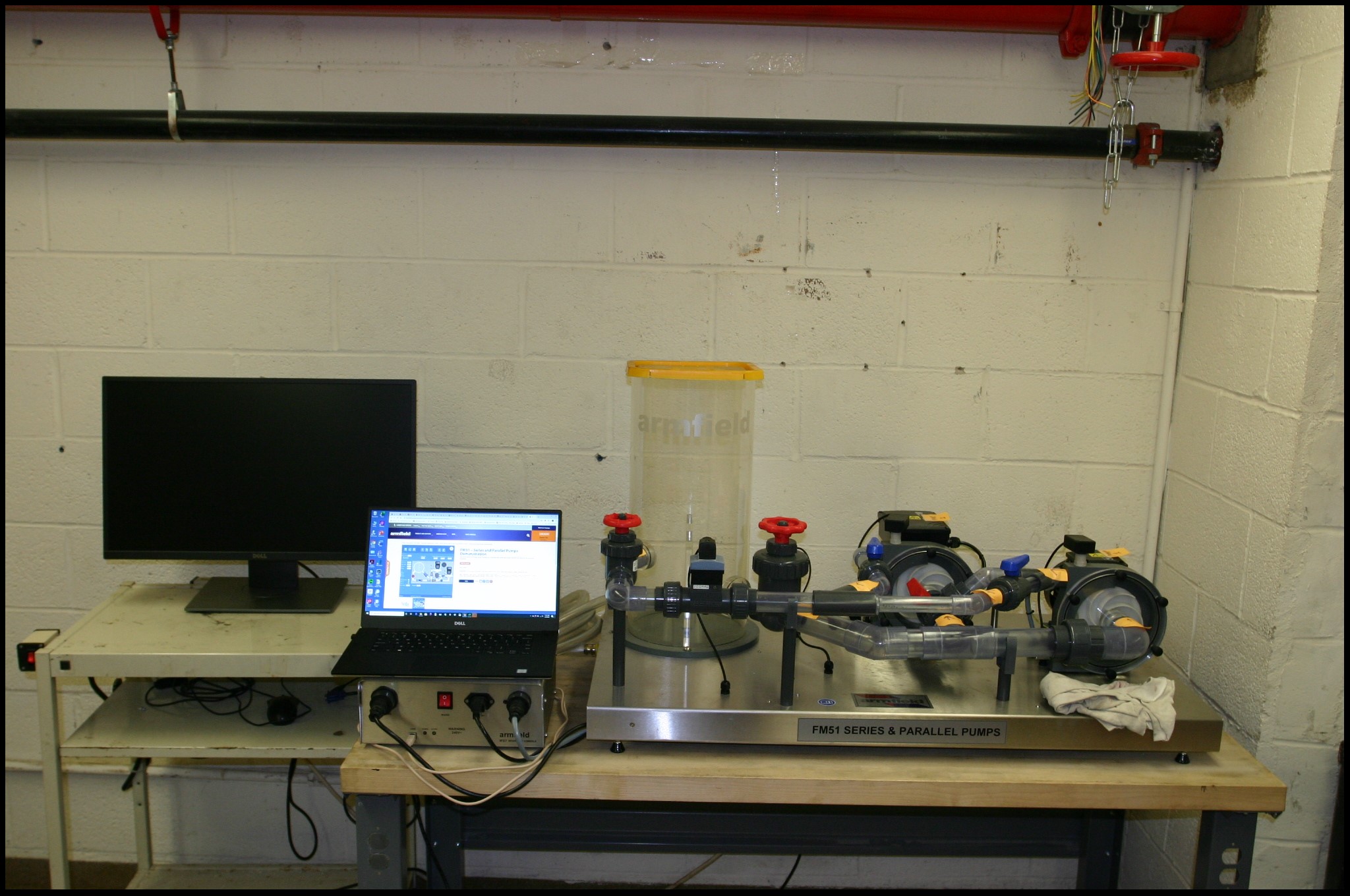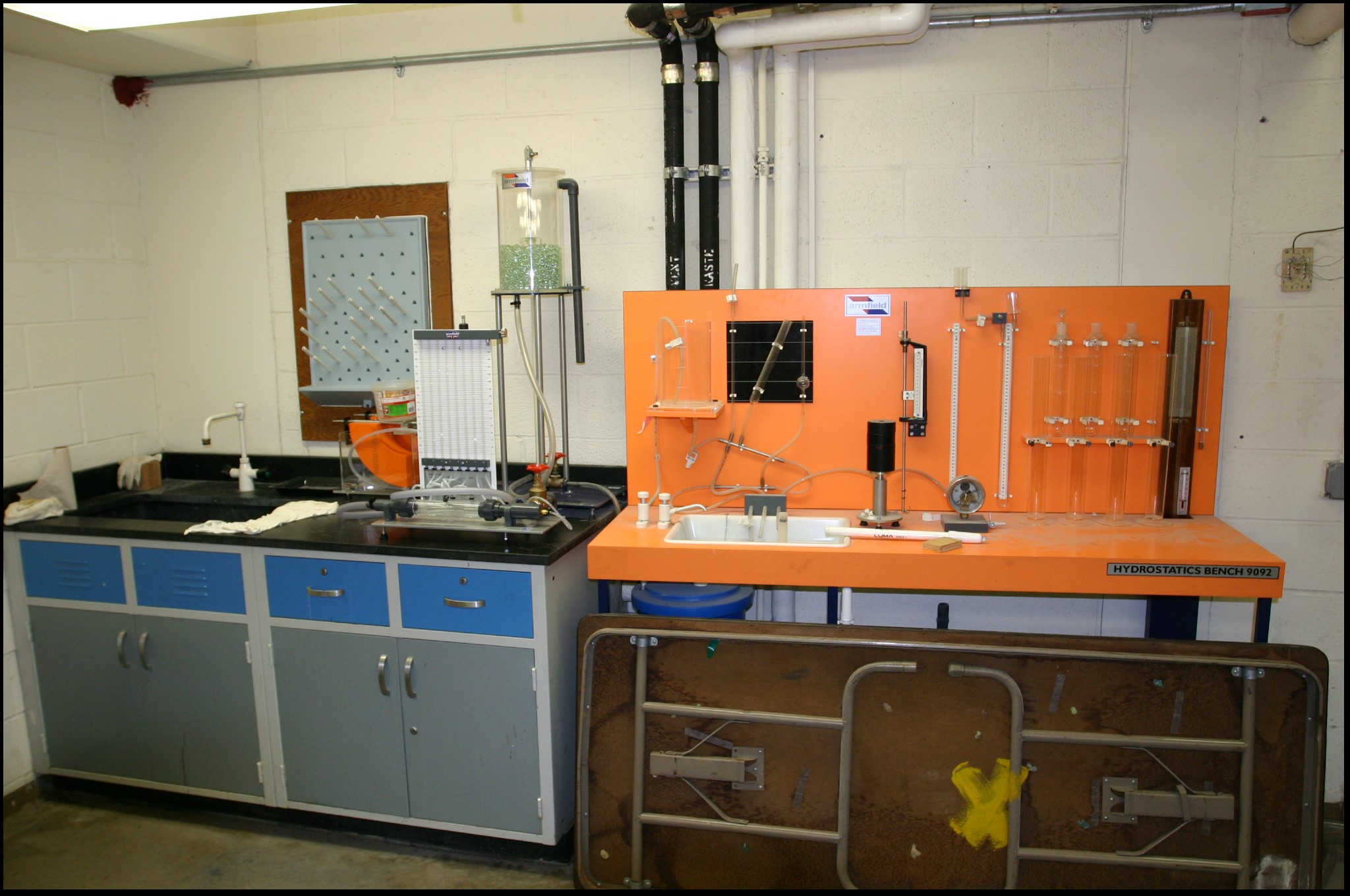The Fluid Mechanics Teaching Laboratory is being used to deliver the wet-lab portion of the CE365, Hydrology and Hydraulic Engineering, class. While it underwent a first upgrade (2018) as the department was able to secure about $70K to expand the list of experiments that go with the above course, it is now slated to receive a second upgrade (2022) for about $75K. As a result of these two upgrades, the course is now able to not only offer a selection of experiments to choose from for any given semester but also to have all experimental apparatus in duplicate or even triplicate to accommodate more student groups in parallel. This is a major improvement step because the lab can now handle the increasing student numbers and also free up more lab time for more experiments that can be put in the semester lineup.

The experiments are selected to complement what the students learn in class, actually two classes, i.e. CE350 Fluid Mechanics and this class, i.e., CE365. Some of the experiments are very fundamental in nature, such as Hydrostatic Pressure and Bernoulli Theorem (which are topics in CE350, Fluid Mechanics), while the others are more applied, such as Pipe Friction (and Minor Losses), Pump Analyses, and Weir Flows. Note that we also strongly emphasize computer applications; we offer one experiment based on a spreadsheet calculation for designing an Outfall Diffuser and the Class Project typically addresses a Water Distribution Network for which applications such as EPA-Net, SWMM, WaterGEMS, or STANET can be used. We also added a design lab, in which students simulate being out in the field and needing to design a field discharge measurement setup with only rudimentary tools and materials (imagine hiking into a remote hilly area with no motorized access).
We also put a strong emphasis on having a good and useful (and fun!) experience while conducting the experiments. A key to this desired experience is to keep the lab groups small, typically 4 to the group (on occasions 5), so every student gets to actually do something instead of observing the action from a second row peaking-over-somebody's-shoulder situation. The class is typically supported by a (or two) teaching assistants (they run the experiments with the students) in addition to a dedicated lab technician who sets up the experimental apparatus and keeps the equipment in running order.
For a complete list of our experiments see below.
1) Hydro Statics
2) BERNOULLI's Theorem
3) REYNOLD-OSBOURNE
4) Pumps in Series/Parallel
5) Sharp-Crested Weirs
6) Pipe Friction (various diameters, roughness, minor losses)
7) Design of an Outfall Diffuser (computer lab experiment)
8) Design of a field discharge measurement device, minimal materials and tools
9) The laboratory also contains a tilting flume 52 ft. long for Open Channel experiments

Last Updated: 05/17/2022 16:47